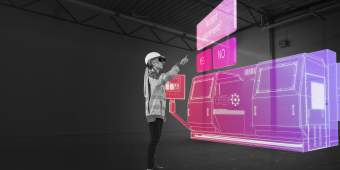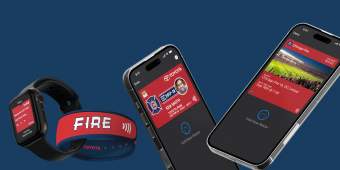The Internet of Things (IoT) as we know it exploded with the iPhone – a sort of universal remote in people’s pockets.
First, companies built iPhone applications to support home appliances and connected home devices. Then, smartphones sparked the “connected home” trend. Today, IoT devices are everywhere.
IoT devices aren’t limited to consumer applications. Businesses can develop IoT products for applications in manufacturing, utilities, logistics, retail, and more.
Businesses can take advantage of IoT to meet their own needs and their users’. But to get there, it’s important to center users and question assumptions at every stage. Here, we’ll highlight six examples of user-driven IoT design. But first, a brief look at the history of IoT devices.
What is the Internet of Things?
We’ve found that most people aren’t working off of the same Internet of Things definition, and that makes it challenging to have conversations about what it can actually do.
The Internet of Things, or IoT, has a pretty straightforward meaning: adding connectivity to hardware so it can send and receive information. When we define the Internet of Things this way, you can start seeing examples of IoT all over the place. Take the Nest. Changing your home’s temperature from your phone has gone from seeming like the future to the norm in the span of a few years.
Internet of Things use cases for businesses quickly start becoming plain. Progressive launched the Snapshot, a small piece of Internet of Things hardware that lives in customers’ cars collecting data. Customers get a discount on their auto insurance, and Progressive gets to monitor just about everything that happens in the cars it insures.
Amazon’s Alexa took Internet of Things innovation a step further.
On its own, the software lets users ask questions and add items to their Amazon shopping list from Internet of Things objects like the Dot or Echo. When it starts to hook up with other connected objects though, that’s when the real magic starts. Because Alexa can tap into a whole ecosystem of Internet of Things devices, it can play music through your speakers, unlock your doors or turn up the heat, depending on how connected your home is.
That’s how the Internet of Things works best: creating communication and, eventually, automation across the previously separate devices that help us run our lives.
6 Internet of Things applications to help shape your strategy
A lot of businesses can benefit from small, internet-enabled “things.” They can help with reporting, maintenance, and even provide control over machinery or other equipment that would otherwise need to be operated onsite. Even if you know you’d like to go down this path, it can be somewhat daunting to know where to start.
See our full range of mobile app development services
A good way to get ideas on how to use the Internet of Things, is to look at examples of how other companies have leveraged internet-connected devices to improve their processes or save money. We’ve helped clients apply IoT technologies to their businesses in the past, especially during the strategy phase, and we’ve found a few straightforward scenarios that can help you get the ball rolling.
Using IoT devices to get real-time alerts
Dickson, one of our oldest clients, creates products that monitor temperatures and humidity, then display them on a screen. Those screens were traditionally placed next to the piece of equipment or area they were monitoring. If you needed to know the temperature, you’d simply walk up and look. There were very few Internet of Things manufacturing examples at the time, but we thought it would be a great opportunity to add some connectivity and see how Internet of Things capabilities could expand on the features of the sensor itself.
Our first iteration wasn’t all that sophisticated — an Android tablet mounted to a nearby room that showed the same stats reflected on the original hardware. Once we could prove the Internet of Things solution worked as needed, we were able to make it more advanced. The end result was an app customers can use from anywhere to monitor the levels in their labs, refrigerators, warehouses, wherever. The best part is they don’t even have to keep an eye on things. The app will alert them if any of their levels deviate from set norms.
Use Internet of Things applications to make your phone a remote control for anything
The next logical step after getting notified when something’s wrong is being able to fix it from afar. We’ve been working with one client that’s applied the Internet of Things to something as simple as water. Its product allows you to monitor and adjust your water usage from your phone, wherever you are. Like a Nest, but for your water tank instead of your thermostat. So if you get off the airplane only to remember that you left your water on, you can shut it off remotely and continue on your vacation. You’ll also get an alert if something springs a leak, so you won’t have to worry about coming back to a flooded house.





